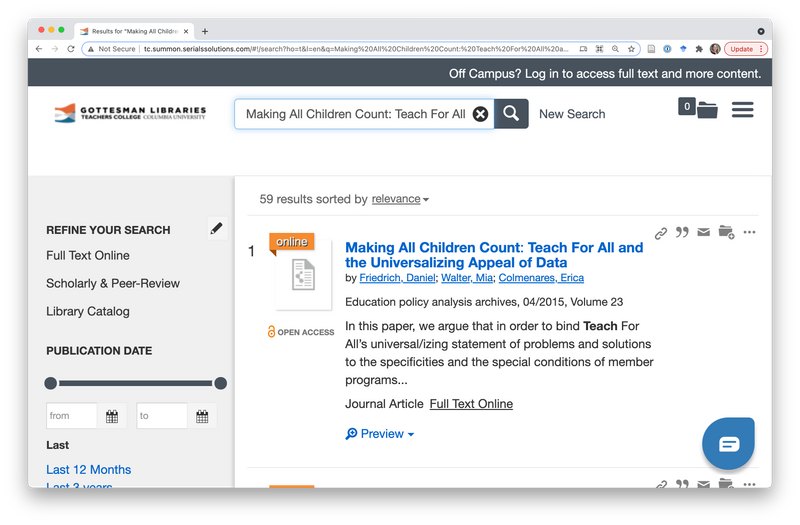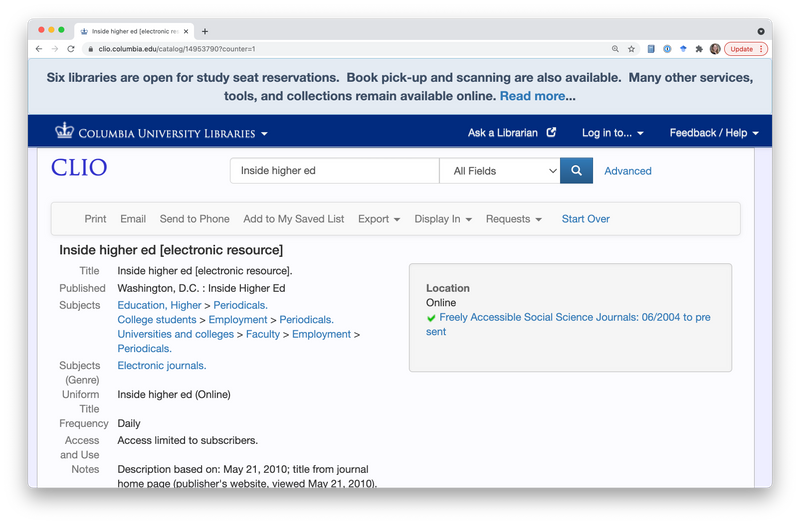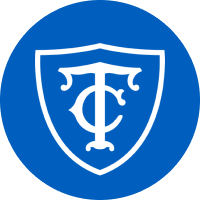Open access resources (Part 2): Navigating journals and books
Today’s blog, the second in a series on open access resources, reviews approaches to navigating open access journals and books. It illustrates what may be encountered during everyday searches for scholarly materials, and includes hands-on examples of actual requests for course reserves and research resources, received by Technical Services at the Gottesman Libraries.
 “Supersleuth!” Still by Goldwyn Pictures from the American drama film Sherlock Holmes (1922) with John Barrymore, on page 41 of the May 13, 1922 Exhibitors Herald. Credit Courtesy Wikimedia Commons and the Internet Archive.
“Supersleuth!” Still by Goldwyn Pictures from the American drama film Sherlock Holmes (1922) with John Barrymore, on page 41 of the May 13, 1922 Exhibitors Herald. Credit Courtesy Wikimedia Commons and the Internet Archive.
The Gottesman Libraries’ blog on Copyright, Open Source and Education and the Columbia University Libraries’ Open Educational Resources (OER) homepage offer great tips on teaching and research materials found either in the public domain or licensed in a manner providing free access for educational purposes. Columbia’s OER webpage lists:
- Columbia University Open Access Journals
- Digital Collections and Directories including:
- The Creative Commons, a tool that allows the discovery and use of openly licensed and public domain works, including images
- The OER Metafinder, a tool that searches for Open Educational Resources across 21 different sources
- WorldCat, a tool covering the over 48 million records cataloged worldwide by OCLC member libraries
- Open access textbooks and monographs
- The Directory of Open Access Journals and the Directory of Open Access Books, described in more detail, below
The Directory of Open Access Journals (DOAJ) is an independent repository, launched in 2003, of nearly six million indexed articles contained in over 16,000 peer-reviewed open access journals in the fields of science, technology, medicine, the social sciences, the arts, and the humanities. The DOAJ is financially supported by many libraries, publishers and other like-minded organizations with a firm commitment to open access and to the infrastructure that supports it. The Directory of Open Access Books (DOAB) was established in 2012 in close cooperation with the DOAJ. Its mission is to increase the discoverability of open access books. Freely available on the web, and listed on Columbia’s OER webpage, the DOAJ and the DOAB are also reachable via the Gottesman Libraries’ Directory of TC E-Journals and Databases.
When I receive requests for assistance locating scholarly materials, I usually start by checking TC Supersearch http://tc.summon.serialssolutions.com/#!/search and CLIO Quicksearch https://clio.columbia.edu/quicksearch. These searches themselves sometimes lead to open access ejournal and ebook discoveries. When I’ve found little or no information through the proxied university channels, I feel even more free in my open access search. And the game is afoot! Some hands-on examples follow.
 The game is afoot by Graeme Pow, June 8, 2016. Credit Courtesy Creative Commons.
The game is afoot by Graeme Pow, June 8, 2016. Credit Courtesy Creative Commons.
Find an open access journal article via TC Supersearch: The orange open access icon that appears to the left in the TC Supersearch example, below, indicates that the article sought is open access. Click either the article title, Making All Children Count: Teach For All and the Universalizing Appeal of Data, or Full Text Online, to reach the DOAJ listing and the freely available open access link to the article.

Find an open access book via CLIO Quicksearch: The links to DOAB and OAPEN (Open Access Publishing in European Networks) in the CLIO Quicksearch example, below, indicate that the ebook is open access. Click the book title, Dwelling in political landscapes: Contemporary anthropological landscapes, or OAPEN, to reach the OAPEN library listing and the freely available open access link to the book.

Use CLIO Quicksearch to confirm open access: Doing this can be helpful when I’m unsure about the quality of a link, for example, if it doesn't appear proxied (unrestricted access) or permanent, e.g., Cusson R. and Long. L (2014) Joining the Nursing Faculty https://www.insidehighered.com/advice/2014/03/26/essay-how-get-job-nursing-professor. Using CLIO Quicksearch, I confirm that Inside Higher Ed is an open access ejournal. It is listed in the Freely Accessible Social Science Journals database, https://clio.columbia.edu/catalog/14953790?counter=1

Don’t be quick, however, to rule out open access in the presence of a university proxy! For example, the trade publication, Academe, from the American Association of University Professors, is both proxied (restricted access) through the university, http://vq2st5lq8v.search.serialssolutions.com/ejp/?libHash=VQ2ST5LQ8V#/search/?searchControl=title&searchType=title_code&criteria=ACADWA197&language=en-US&titleType=JOURNALS and available open access: https://www.aaup.org/article/how-evaluate-faculty-governance-structure
Use HathiTrust for digital access to some journals: The HathiTrust Digital Library’s Emergency Temporary Access Service (ETAS) offers temporary access to digitized journals while normal access to physical journals is disrupted. Follow the same steps as for ebooks, in the prior blog, Open access resources (Part 1). Below are two journal examples from actual materials requests. The first is proxied (restricted temporary access). The second (being much older) is in the public domain (unrestricted permanent, open access):
- CLIO Quicksearch The physician and sportsmedicine v.16 1988: July-Dec. HathiTrust https://babel.hathitrust.org/cgi/pt?id=ien.35558001561196.
- Herrick, J. B. (1912). Clinical features of sudden obstruction of the coronary arteries. JAMA: the journal of the American Medical Association, 19(23), 2015-2020. HathiTrust https://babel.hathitrust.org/cgi/pt?id=mdp.39015082605331&view=1up&seq=2021
Give some of these tips a try and you will discover how valuable Teachers College’s TC Supersearch and Columbia University’s CLIO Quicksearch are for navigating to open access journals and books!

